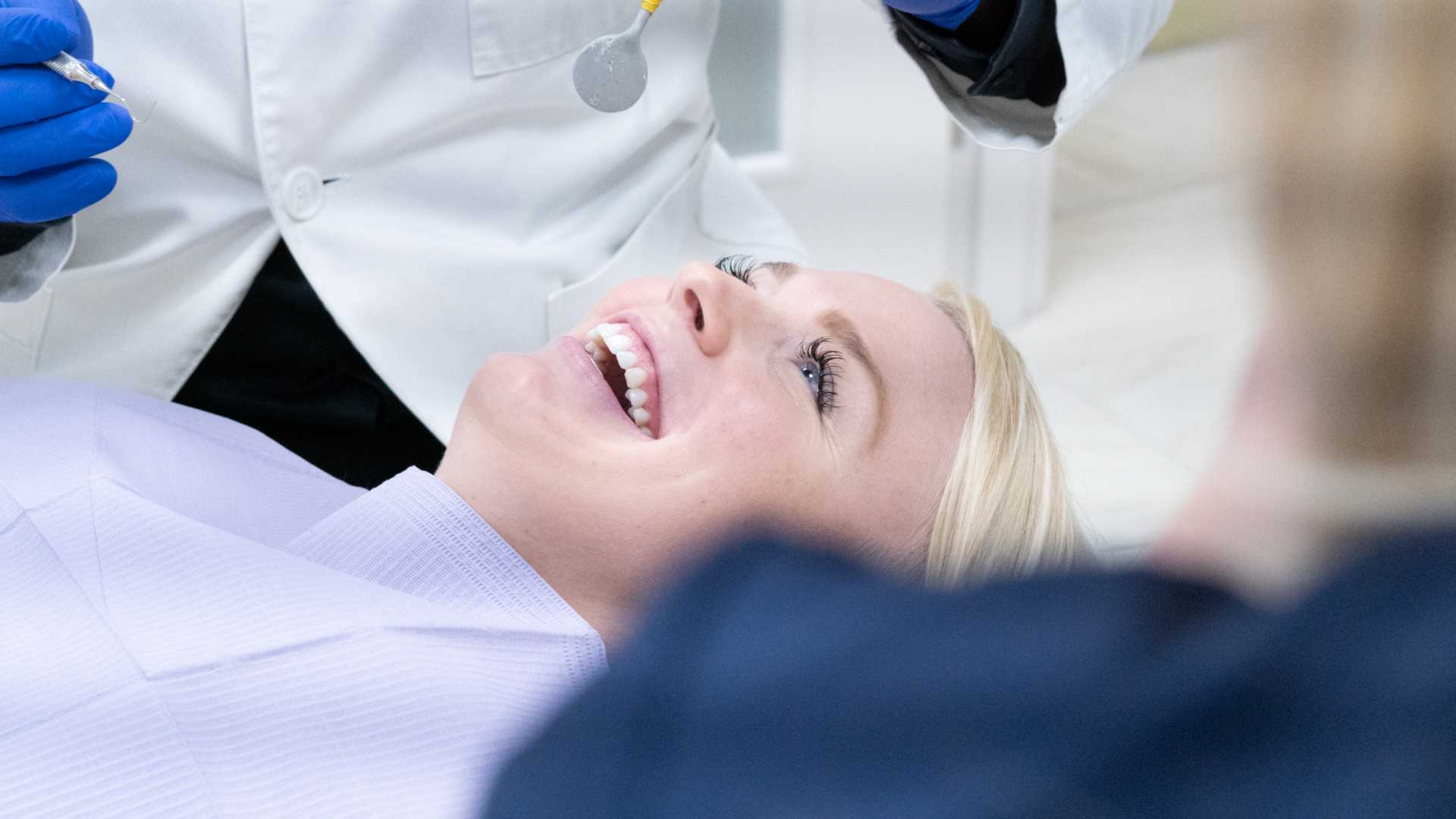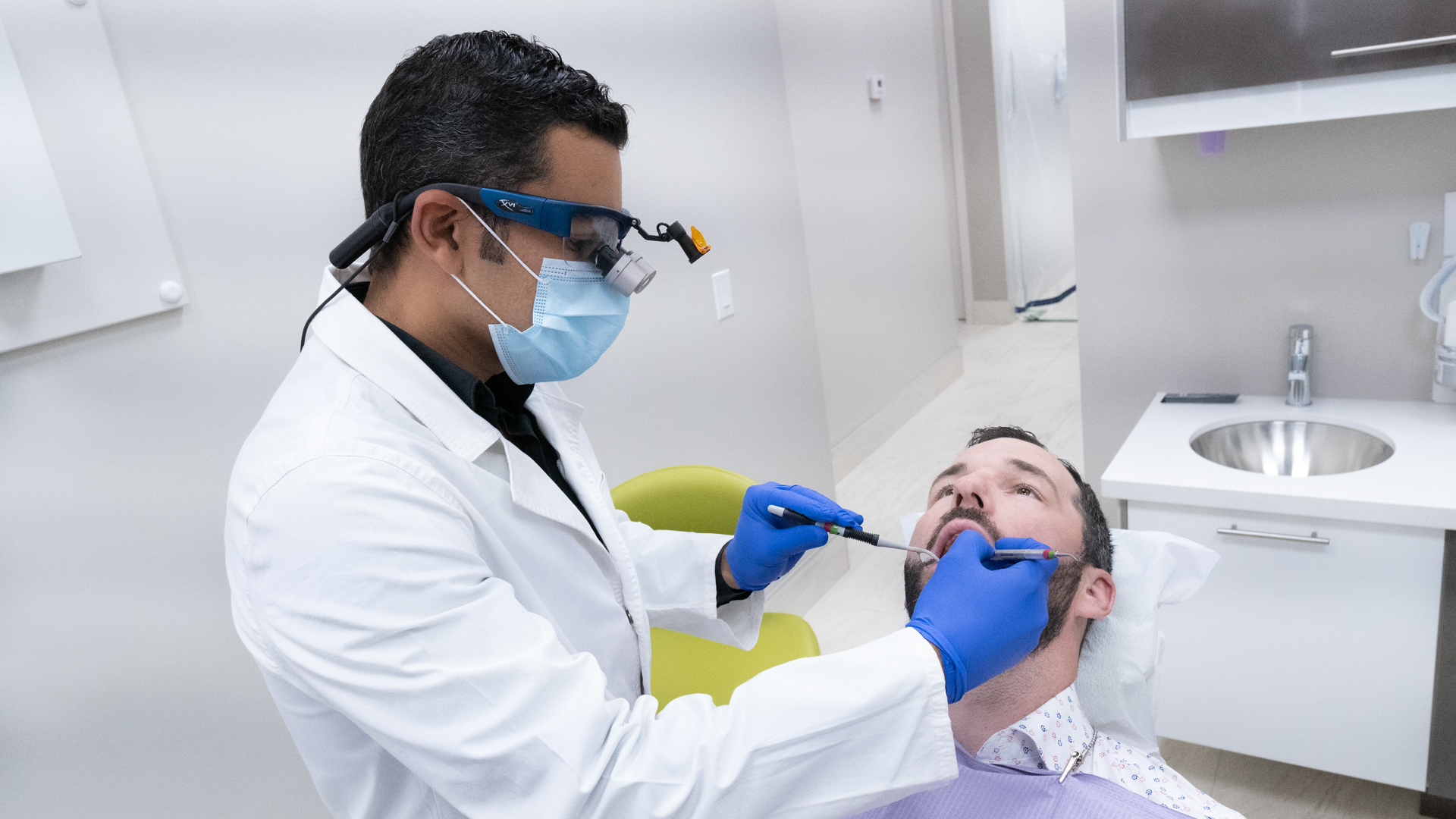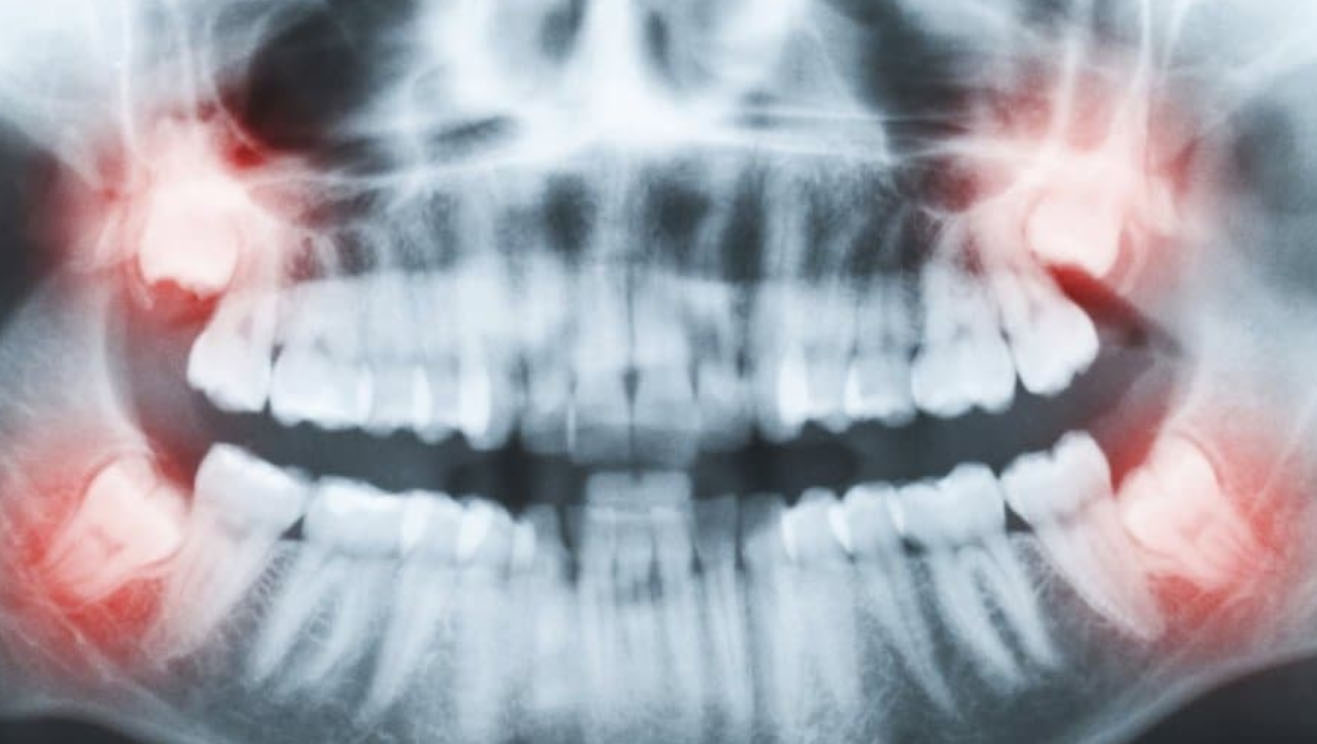Periodontal Disease Treatment in Grimsby, Ontario
Protect Your Gums. Preserve Your Smile. Live Healthier.
Gum disease is the #1 cause of adult tooth loss—but it’s also one of the most preventable and treatable oral health conditions. At Dentistry at Waterview in Grimsby, Ontario, we offer personalized periodontal care grounded in scientific evidence and best practices from the Canadian Dental Association (CDA).
If you’re noticing signs of gum disease—bleeding, swelling, or persistent bad breath—it’s time to act early and protect your smile for life.
What Is Periodontal (Gum) Disease?
Periodontal disease is a chronic infection of the gums and supporting structures of the teeth. It starts with gingivitis (gum inflammation) and can progress to periodontitis, where gum and bone loss occurs.
According to the CDA, nearly 7 in 10 Canadians will experience some form of gum disease in their lifetime. Left untreated, it can lead to:
- Tooth loss
- Bone loss
- Increased risk of heart disease, diabetes, and stroke

Benefits of Treating Periodontal(Gum) Disease Early
- Prevent Tooth Loss: Gum disease is the leading cause of adult tooth loss—but treatment dramatically lowers that risk.
- Control Inflammation & Infection: Removing bacteria reduces systemic inflammation and the risk of secondary infections.
- Protect Overall Health: Studies link gum disease to increased risk of heart disease, diabetes, and low birth weight in pregnancy. Treating it protects more than just your mouth.
- Fresher Breath & Healthier Gums: Say goodbye to chronic bad breath and bleeding gums.
- Saves Money Over Time: Preventing gum disease means avoiding costly procedures like extractions, implants, or dentures.
Periodontal Disease Treatment Services We Offer
At our clinic, we provide a complete range of periodontal disease treatments tailored to each patient’s needs. Our services include both non-surgical and advanced surgical options to restore and maintain healthy gums:
Non-surgical therapies such as scaling and root planing (deep cleaning) to remove plaque and tartar beneath the gum line and encourage gum healing.
Antibiotic therapy to control bacterial infection and support recovery.
Laser-assisted treatments to target diseased tissue, reduce bacteria, and promote regeneration with minimal discomfort.
Surgical interventions including pocket reduction surgery, gum grafting, crown lengthening, and other advanced procedures for severe cases.
Regenerative procedures such as bone and tissue grafting to rebuild lost support structures.
Ongoing periodontal maintenance, with regular cleanings and evaluations to prevent recurrence of gum disease.

Client's Testimonies
Book Your Periodontal Disease Treatment Visit Today!
Frequently Asked Questions for Periodontal Disease Treatment
What is Periodontal Gum Disease?
Periodontal gum disease, often called gum disease, is an infection of the tissues that support your teeth. It begins with plaque buildup on the teeth and gums, leading to inflammation (gingivitis). If untreated, it can progress to periodontitis, where the gums pull away from the teeth, bone is lost, and teeth may eventually loosen or fall out.
What Are the Signs & Symptoms of Periodontal (Gum) Disease?
Recognizing early warning signs helps prevent long-term damage. Common symptoms include:
- Red, swollen, or tender gums
- Bleeding when brushing or flossing
- Receding gums (teeth look longer)
- Persistent bad breath or bad taste
- Plaque buildup at gum line
- Loose or shifting teeth
- Visible gaps between teeth and gums
If you notice any of the above, especially bleeding gums, don’t ignore it—it’s your body’s signal that something needs attention.
What Are the Stages of Periodontal Disease?
- Gingivitis (Early Stage)
Caused by plaque buildup along the gumline. Gums may appear red and bleed easily, but there’s no bone loss yet—completely reversible with proper care.
- Early Periodontitis
Gums begin pulling away from the teeth. Plaque hardens into tartar, forming pockets that trap bacteria. Minor bone loss may start.
- Moderate to Advanced Periodontitis
Deep pockets form, bone and tissue loss progresses. Teeth may become loose, and long-term damage is likely without intervention.
Early detection is critical—gingivitis can be reversed, but advanced stages require ongoing care to manage.
What Causes Periodontal Disease?
Some people are more prone to gum disease, especially with:
- Poor oral hygiene
- Smoking or tobacco use
- Diabetes or hormonal changes (e.g. pregnancy, menopause)
- Family history of gum disease
- Certain medications (e.g. that reduce saliva)
Why Shouldn’t You Delay Gum Disease Treatment?
Delaying treatment for gum disease can lead to serious and costly consequences, including:
Permanent Bone Loss – Advanced gum disease destroys the jawbone supporting your teeth, and this damage can only be repaired with surgery.
Tooth Loosening & Shifting – As support weakens, teeth may move or fall out, affecting your bite, speech, and ability to chew.
Chronic Inflammation – Ongoing infection strains your immune system and may worsen other health conditions such as diabetes or heart disease.
Higher Treatment Costs – What starts as routine care can progress into complex surgical procedures, making treatment more expensive and intensive.
How Does Periodontal Gum Disease Treatment Work?
Treatment works by removing infection, reducing pocket depths, and restoring gum health. This may include:
Deep Cleaning (Scaling and Root Planing): Removes plaque and tartar beneath the gums.
Medication or Antibiotics: To fight bacteria and control infection.
Surgical Options: Such as gum grafting, pocket reduction surgery, or bone regeneration for advanced cases.
Maintenance Care: Regular checkups and cleanings every 3–4 months to prevent recurrence.
What to Expect During Your Visits for Periodontal gum Disease Treatment?
During your visits, your dentist or periodontist will carefully evaluate your gums and customize a treatment plan based on the severity of your condition. You can typically expect:
Initial Examination: Measuring gum pockets, checking for bone loss, and reviewing your oral health history.
Deep Cleaning (Scaling & Root Planing): Removing plaque and tartar buildup below the gumline to promote healing.
Treatment Sessions: Depending on your case, visits may include antibiotics, laser therapy, or surgical options to restore gum and bone health.
Follow-Up Care: Regular periodontal maintenance appointments every few months to monitor progress and prevent recurrence.
This step-by-step approach ensures your gums heal properly and your teeth remain supported and healthy.
How Can I Book a Schedule for Periodontal Gum Disease Treatment with Dentistry at Waterview?
Booking your appointment is simple. You can:
Call our clinic directly to speak with our friendly team.
Use our online appointment request form on the Dentistry at Waterview website.
Visit our clinic in person to schedule at the front desk.
Don’t Wait—Protect Your Smile Today
Your gums are the foundation of your oral health. If you’re noticing signs of gum disease—or haven’t seen a dentist in a while—now’s the time to take action. Call us today at 289- 235- 8188 or Book online to schedule your periodontal evaluation at Dentistry at Waterview in Grimsby.
Let us help you heal your gums, save your teeth, and protect your health—starting today.















